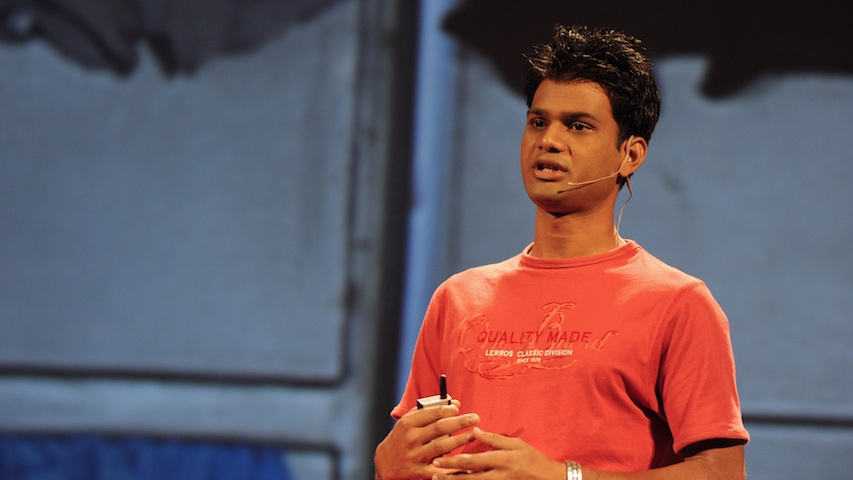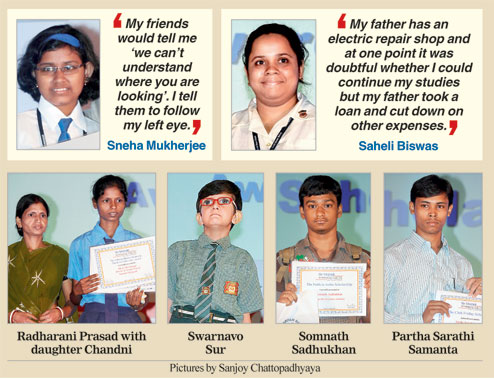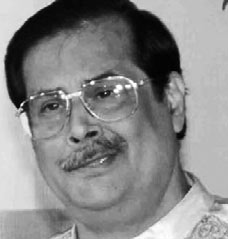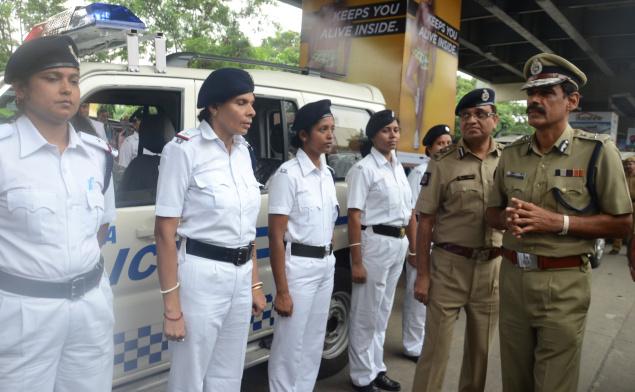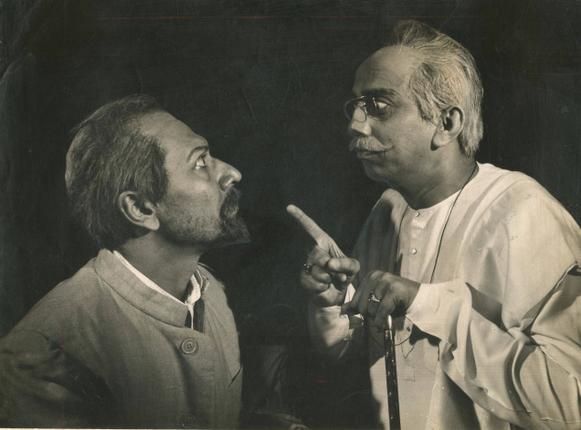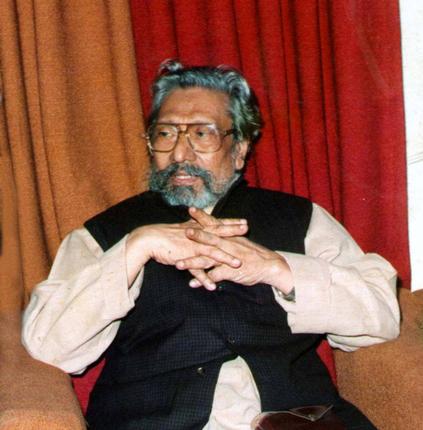Vicky Roy came from a poor family, other than him, there were six other mouths of his three sisters and three brothers to feed. Getting beaten by his mother was normal, and he was not allowed to play with other children, and while his parents went in search of work, he was left with his grandparents.
Running away:
In 1999, when he was 11-years old, Roy decided to run away. With Rs. 900 in his pocket, which he had stolen from his uncle, he boarded a train at Purulia, West Bengal, and landed in Delhi. Some street children at the station spotted him crying, and took him to Salaam Balaak Trust (SBT), a home for young boys who have no place else to go that was formed from the proceeds of the Mira Nair movie ‘Salaam Bombay.’
But the place was always locked, this did not suit Roy’s free spirit, so one morning when the gates were opened for the milkman to come, he ran away for a second time. He met the same kids he had met at the railway station, and after narrating his tale, he joined them as a ragpicker. ” I collected water bottles and sold them for Rs. 5, the police beat us and the goons on the railway platform would steal all our money. I joined a restaurant near Ajmeri gate as a dishwasher, during winters the water was cold, and I had rashes that would bleed. This was when I met a volunteer from the same SBT who told me that I should be in school and that the trust had many centres and in some you could attend school and you are not locked up all the time,” says Roy. He rejoined one of the many centres the trust ran called Apna Ghar.
Back to SBT and meeting Dixie Benjamin:
Roy scored 48 per cent in his 10th standard board exams. Realizing that he was not bright academically he was told to join National Institute of Open Schooling where he could get training in computers or TV repair. His first brush with photography happened here, when he came across two kids who were undergoing a photography training, and had also gone to Indonesia and Sri Lanka.
Little did he know that his life was about to change forever.
He met Dixie Benjamin, a British filmmaker, who was making a documentary on SBT. Roy hit it off with Benjamin and became his assistant, and thus began his journey as a photographer. Benjamin couldn’t converse in Hindi, and Roy knew only a smattering of English, but he was still able to pick up most of what Benjamin taught him about concepts like aperture, lighting and so on. Before this Roy had used a plastic Kodak camera to take photos. Benjamin brought him upto speed with the use of an SLR.
A dream comes true:
Roy was soon to turn 18-years, and he was dreading it, this meant that he will have to leave SBT and set out on his own. SBT would provide with the basics like a gas cylinder, stove, matress and utensils: but he knew no other life other than what he had at SBT. However, becoming independent proved a blessing in disguise. Roy approached Anay Maan, the well-known portrait photographer to be his assistant. He agreed, but wanted Roy to stay with him for a minimum of three years, he did want him to leave after a few months having picked up some tricks of the trade.
Anay Maan turned out to be a good teacher and mentor. He used to teach Roy about photography by drawing a picture by hand and explaining concepts like lighting and depth of field. The assignments took Roy to many places, his life was now lived in luxurious hotels, and he was collecting flight boarding passes by the dozen. He also browsed a lot of books on photography, which told stories of different subjects. It occurred to him that he had a story to tell as well. He was already on possession of a Nikon F80 that he had bought taking a loan of Rs 28,000 from SBT, which he had repaid by giving back Rs 500 a month.
He shot street children who were 18 years or less, and had a goal to do something with their lives. “I had my first exhibition called ‘Street Dreams’ in 2007, this was sponsored by British Commission and DFID that was very successful. I also took the exhibition to London and South Africa and sold many copies of the book. I now started feeling like I had arrived as a photographer and started developing an attitude,” says Roy. Anay Maan called him and put things into perspective saying that before the exhibition he was simple, but now he was rude. This struck a chord in Roy, who promised to stay true to his roots and not forget his humble beginnings.
He continued working with his mentor on a part-time basis and mostly on the big assignments. There was a subtle change in their relationship, Ayaymaan treated him with a lot more respect, now as his equal, and friend.
Dreaming bigger:
Having a built a platform with ‘Street Dreams’ Roy was confident to take on more ambitious projects. In 2008, there was global competition organized by Maybach Foundation, the Ramchandra Nath Foundation nominated his work, and he was one among three photographers chosen for a six-month residency to be held in 2009 at the International Centre for Photography. This led him to be given access to the World Trade Centre (WTC) site, once a week, for two hours. “I finally felt I knew the reason why I had run away from home all those years back,” recalls Roy. His work was exhibited at WTC 7, and won the Duke of Edinburgh’s award, he was invited to lunch with Prince Edward at Buckingham Palace. This was the first time that he had heard of the palace. Roy’s work started to go places: like the Whitechapel Gallery and the Fotomusem Switzerland. He held his second solo exhibition – WTC: Now- at the American centre in Delhi, in 2009.
Going back to his Apna Ghar roots:
After tasting success globally, Roy decided to come back home to Apna Ghar and resumed work that he had started in 2007. The work was displayed at Vadera Art Gallery, and to coincide with 25 years of Apna Ghar’s existence, he teamed with editor Sanjiv Shaith to bring out a book that was debuted at the Delhi Photo Festival in 2011 called Home. Street. Home.
Giving back:
Even after all the success that Roy has under his belt in his relatively short career, he doesn’t feel like he has arrived as yet. But he’s giving back to his fraternity in small ways. Last year, along with photographer Chandan Gomes he started a photo library called Rang by donating over 500 books to Rang. Rang organizes photography workshops for children in schools and shelters and tries to infuse the spirit of photography in them. The high-quality books on photography can be accessed by anybody at Rang’s Open Library, which is currently located within the Ojas Art gallery in Mehrauli.
Realizing the invaluable role that mentors like Benjamin and Anaymaan played early on in his life he has taken on himself to mentor other upcoming new photographers. He has currently taken under his wing, a 20 year old called Anish to assist him with his shoots.
You can check out Roy’s work here.
Disclosure: The author was hosted by the organizers of the INK Conference, at Kochi, where he met Vicky Roy, an INK 2013 Fellow.
source: http://www.social.yourstory.com / Home> Social Story / by Nelson Vinod Moses / January 29th, 2014
